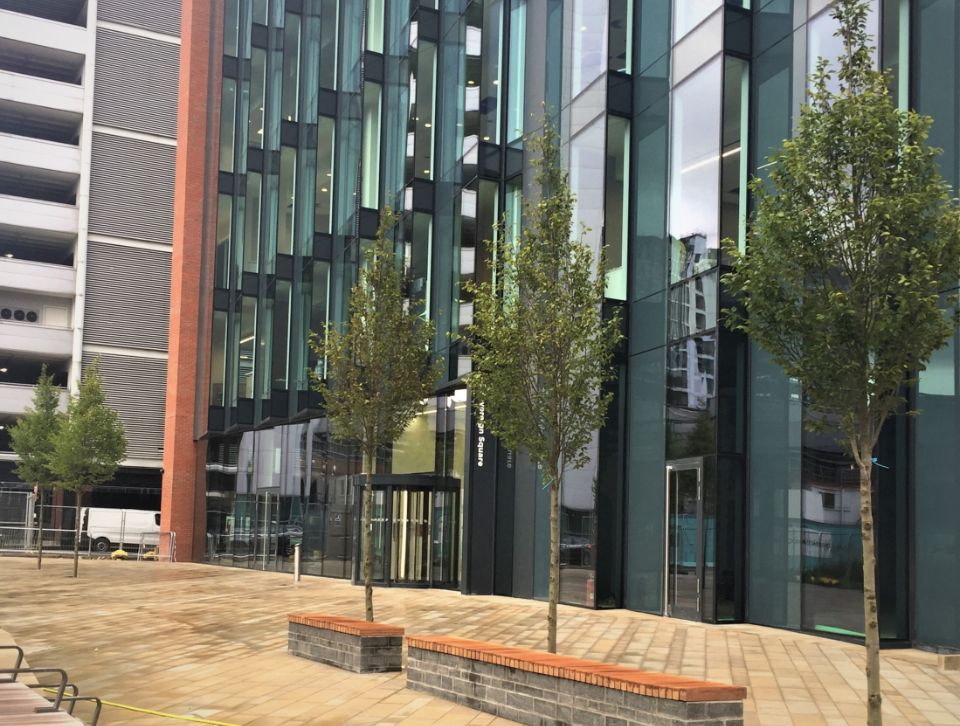Silva Cells were installed under hardscapes along historic Market Street, providing a healthy soil environment for 32 new trees
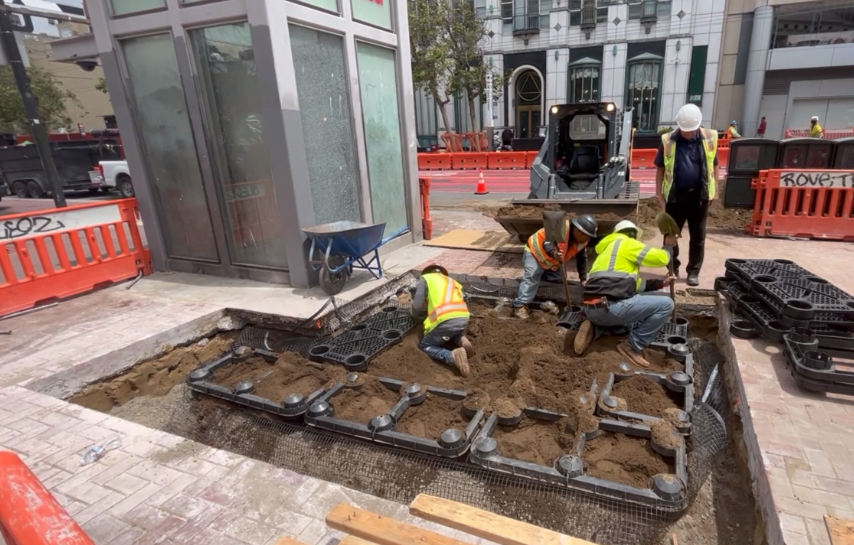
Image via SF Public Works TV
After more than a decade of planning, the Better Market Street project — weathering numerous unexpected obstacles and delays — is officially underway: a $600 million renovation to retune a 2.2-mile stretch along one of San Francisco’s main downtown corridors. The first phase broke ground in the spring of 2023, revitalizing Market Street from 5th Street to 8th Street, widening the sidewalks, replacing the pavement, and improving the overall pedestrian experience. Likewise, a series of new street trees were planted to replace those removed due to space or health concerns; the DeepRoot Silva Cell system was installed under 32 of these plantings to help ensure they grow to robust maturity and offer the welcoming green space (and shade) provided by large-canopy trees.
Number of Silva Cells: 252 (2x)
Number of Trees: 32
Type of Project: Streetscape, Municipal
Project Designer: CMG Landscape Architecture
Project Contractor: JMB Construction, Lone Star Landscape
Installation Date of Silva Cells: Spring 2023
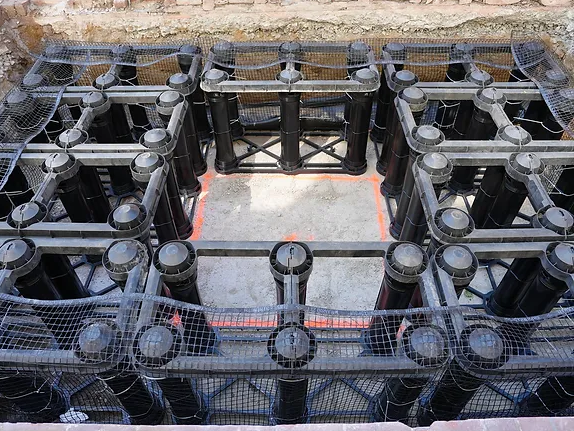
Image via SF Public Works TV
With a lineage dating back to the horse-drawn carriages of the mid-nineteenth century, Market Street is a major city thoroughfare running through San Francisco’s downtown district. Despite its busy commuter traffic and high profile, however, the street was serving as a transportation artery more than a destination in itself: San Franciscans used the road to get where they were going — but they didn’t stay.
By the early 2000s, it’d become clear that Market Street was in desperate need of an upgrade. “The last time we really improved Market Street was when BART was built in the ’70s,” said Christina Olea, project manager for the Better Market Street project at San Francisco Public Works. Ambitious plans for a $600 million overhaul were announced in 2010 with the goal of retrofitting and modernizing the entire streetscape experience from Octavia Boulevard to Steuart Street, 2.2 miles of roadway to be revamped with pedestrian- and eco-friendly features at the forefront.
The Better Market Street project plans envision a “renewed Market Street [that] will anchor neighborhoods, link public open spaces, and connect the City’s Civic Center with cultural, social, convention, tourism, and retail destinations, as well as Salesforce Transit Center, the regional transit hub. The vision is to create Market Street as a place to stop and spend time, meet friends, people-watch while sitting in a café, or just stroll and take in the urban scene.” The team at CMG Landscape Architecture echoed these themes in their design objectives, aiming to “create a life zone, a dedicated corridor that runs parallel to the sidewalk, creating circulation for public life to occur on the street.”
A series of false starts in the 2010s bled into pandemic-related delays in early 2020 and the project failed to get off the ground for more than a decade, frustrating designers, fundraisers, policymakers, and citizens alike. By early 2023, however, the first phase of the project — from 5th Street to 8th Street — had officially broken ground. The purpose of this initial project stage is to widen the sidewalks, repave the hardscapes, and improve the overall traffic flow by closing the road to non-official vehicles. Likewise, a series of new trees were planted along this stretch, accessing quality, uncompacted soil thanks to the DeepRoot Silva Cell system.
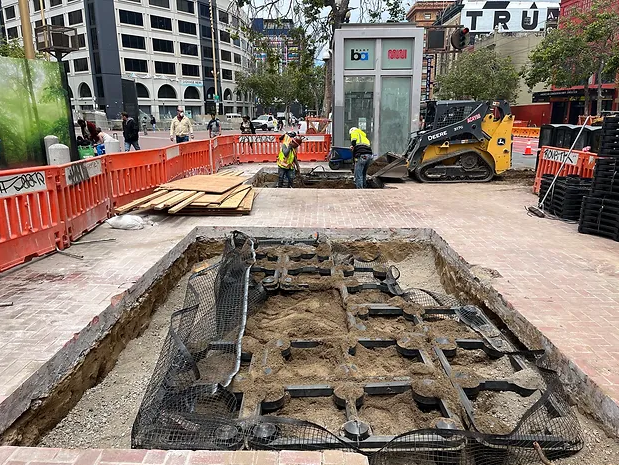
Image via SF Public Works TV
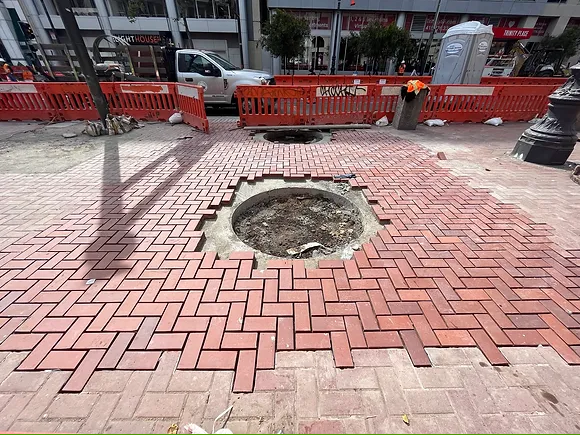
Image via SF Public Works TV
An assessment of the London Plane street trees lining Market Street, conducted before construction began, was not particularly optimistic: of the 767 total trees, 407 — or 53% — were deemed unhealthy and unworthy of salvaging during the renovation process. Another 253 (approximately a third of the existing trees) were also slated for removal due to alignment conflicts. This reality ensured that the planting of new trees jumped to the forefront of project planners’ minds, with an eye to more than just quantity — their quality was equally crucial, providing them with optimal conditions for mature growth.
A total of 252 (2x) Silva Cells were installed from 5th Street to 8th Street, supporting 32 new trees with a robust soil volume environment. By providing these new plantings with access to a quality bank of uncompacted soil, they have a greater opportunity both to grow large and healthy and to fight the often-inhospitable environmental challenges of the San Francisco area (including salty coastal air and high winds).
The Silva Cells’ void space versatility was also a coveted benefit of the system; as San Francisco Public Works TV’s review of the Silva Cell installation states: “Root management is especially important on Market Street, which is one of the oldest, most developed parts of the City with a labyrinth of wires, pipes, conduits, ducts and vaults under its surface — the result of more than 170 years of development.” Silva Cells thrive in dense urban environments where numerous underground priorities are competing for the same space, their field flexibility being one of the system’s chief advantages.
The installation went so well that project planners are already considering Silva Cell technology for subsequent phases of the Better Market Street initiative:
“Though Better Marker Street is our first project using soil cells, the technology is quickly gaining favorability and should soon become the norm on our projects. Our landscape architects see these customizable soil cells as especially useful in future streetscape projects, where landscape elements are closely incorporated with streets, sidewalks and crosswalks, and space can come at a premium. This technique can go a long way toward improving the health and longevity of San Francisco’s street trees and ultimately helping Public Works reach its goal of expanding and diversifying the City’s street tree canopy.”
For more DeepRoot projects in the Bay Area, check out our case studies here, here, and here.
